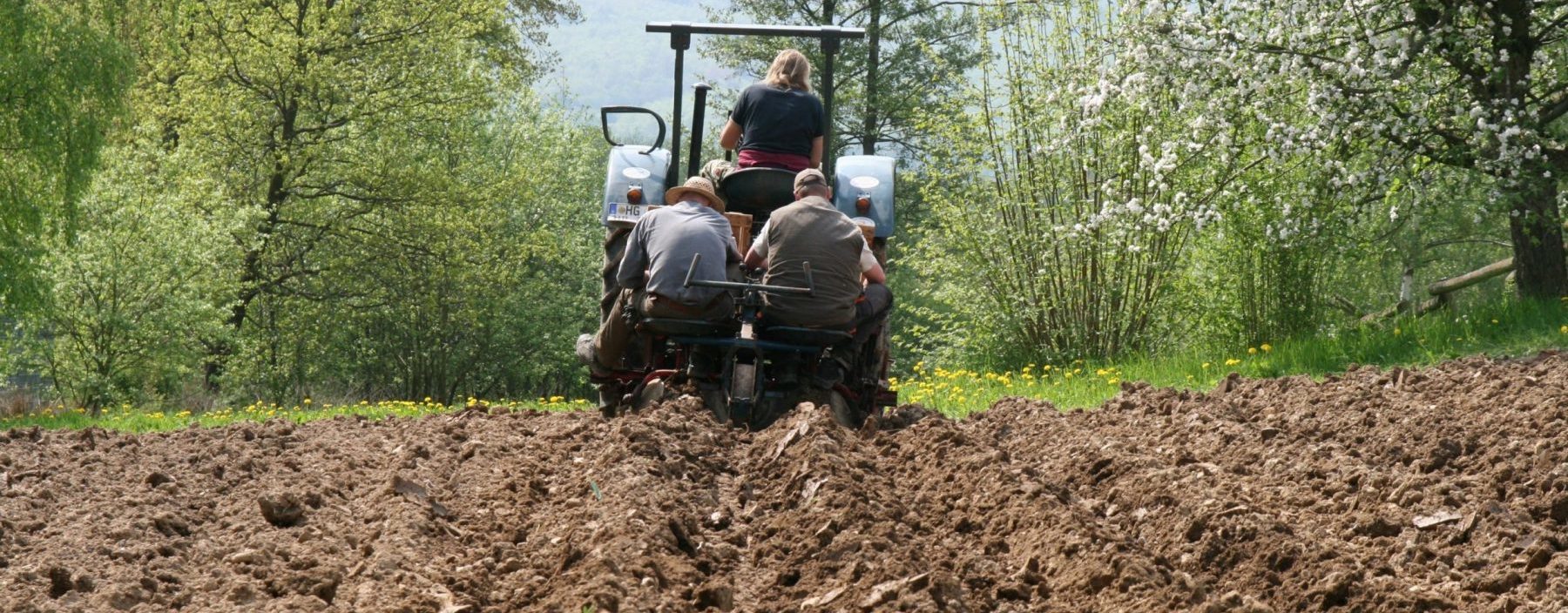Arable Farming

The fields in the museum are tilled according to the principle of three-field rotation. This type of cultivation is the predecessor of modern rotation farming of arable land. In its earliest form, fields were divided into fields for winter crops, for summer crops, and fallow land, with the grass and herbs growing on the latter serving as pasture fodder for animals. Winter crops are grains which are sown in autumn and harvested in the summer of the following year. Thanks to their slower growing period, they produced better quality and higher yields. Summer crops are not hardy and are therefore sown in spring. In later periods, the fallow land was used to grow root and fodder crops if the soil was suitable. This improved three-field rotation system increased the yield and helped keep back weeds.
Since the soil was able to recover in the fallow seasons thanks to the weed growth and the organic fertilisation by grazing animals, three-field rotation was sustainable at low yield levels. Later, when livestock was kept increasingly indoors, the organic fertiliser had to be transported to the fields as manure to prevent the system from collapsing. Wild field herbs, which have vanished from modern agriculture, can be preserved on our fields. We regard this as another contribution to the support of endangered species in the Ark Project that we run in the Open Air Museum.
You can find our three rotating fields in the Northern Hesse ensemble: The ridge and furrow fields, the mill field in front of the Windmill from Borsfleth (5) and the small fields around the terraces. The areas in which single crops are grown are quite small, allowing us to show a wide variety of grains, root crops and fodder plants. This type of small-plot tillage reflects the conditions prevalent during eras when partible inheritance was common practice. This system of inheritance led to the increasing fragmentation of fields which made tillage much more difficult. A single-crop field only had to be wide enough to allow a team of draught animals to turn around.
Wherever possible, we also use traditional varieties on the museum’s arable land in order to do our bit for their preservation. You can easily tell this from the stalk length of grains: since grains used to compete against weeds without the aid of herbicides, high-stalked varieties were popular. The same straw which is today seen as a bothersome waste product was then considered valuable as plant fodder and raw material.
Ridge and Furrow
Ridge and furrow fields were arranged by organising the ploughing so that the sods of each ploughed line would tilt towards the middle, resulting in the growth of a middle ridge and sideways dips over time. This facilitated the drainage of heavy and damp soils, making for easier work and allowing tilling earlier in the season.

Mit dem Laden der Karte akzeptieren Sie die Datenschutzerklärung von Google.
Mehr erfahren




